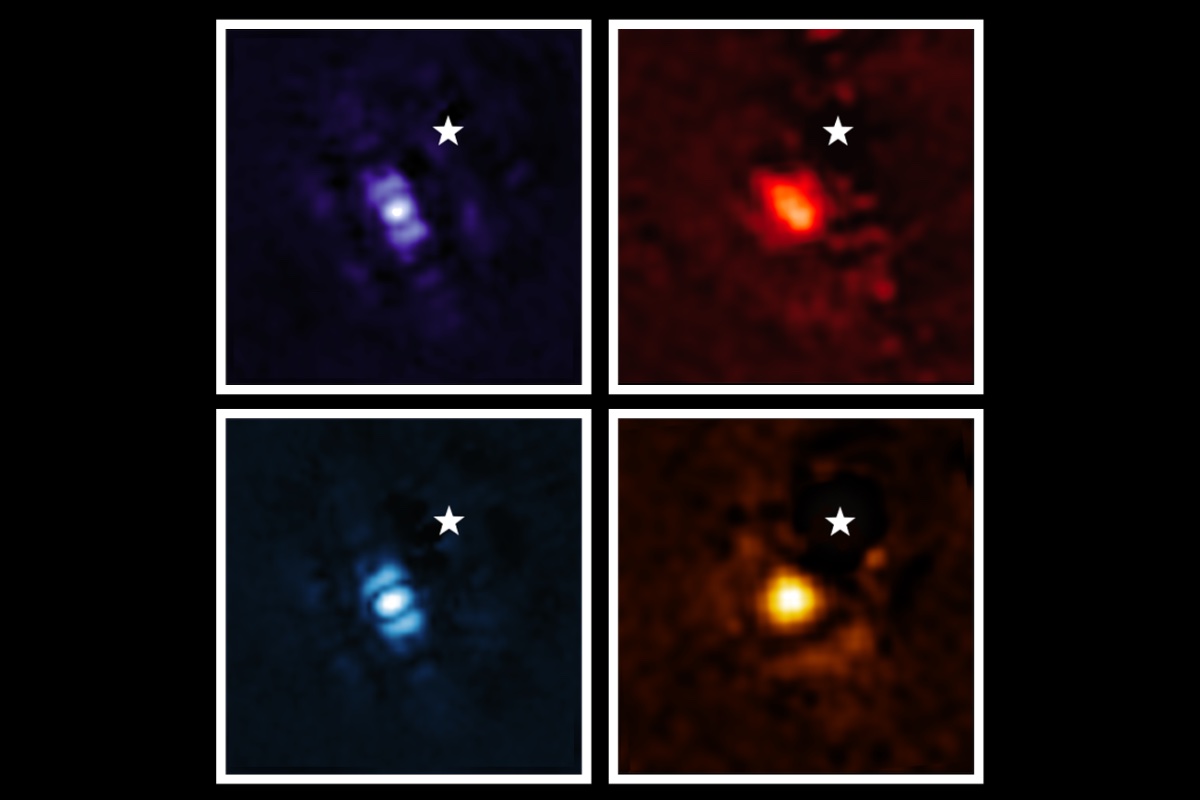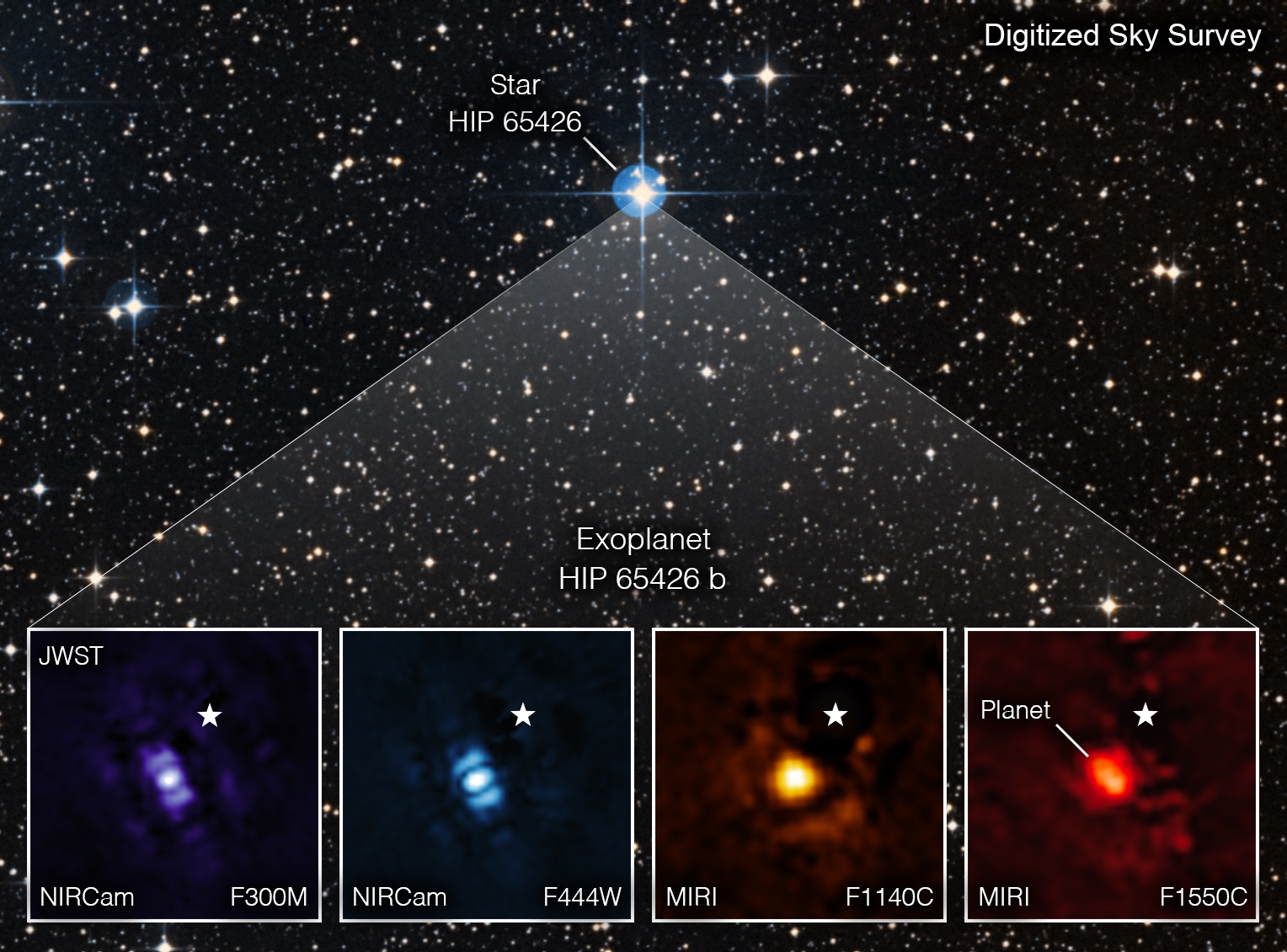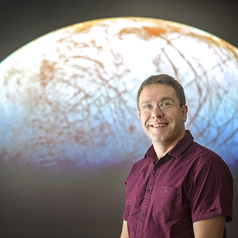
The James Webb Space Telescope has released its very first exoplanet image – here's what we can learn from it
The new images reveal JWST will be a fantastic tool for astronomers aiming to improve their knowledge of exoplanets.

This article was originally published at The Conversation. The publication contributed the article to Space.com's Expert Voices: Op-Ed & Insights.
Did you ever want to see an alien world? A planet orbiting a distant star, light years from the Sun? Well, the James Webb Space Telescope (JWST) has just returned its first-ever picture of just that — a planet orbiting a distant star.
The new images reveal JWST will be a fantastic tool for astronomers aiming to improve their knowledge of exoplanets (planets around other stars) — even better than we had hoped it would be!
But for those who’ve grown up on a diet of Star Trek, Star Wars, and myriad other works of science fiction, the images may be underwhelming. No wonderful swirling clouds, in glorious or muted colors. Instead, we just see a blob — a single point of light.
So why do these observations have astronomers buzzing with excitement? And what might we learn in the months and years to come?
Related: Iconic James Webb Space Telescope images turned into music
Observing hidden worlds
Over the past three decades, we have lived through a great revolution — the dawn of the Exoplanet Era. Where we once knew of no planets orbiting distant stars, and wondered whether the Solar System was unique, we now know planets are everywhere.
At the time of writing, the number of known exoplanets stands at 5,084, and the count grows larger with every week.
Get the Space.com Newsletter
Breaking space news, the latest updates on rocket launches, skywatching events and more!
But the overwhelming majority of those exoplanets are detected indirectly. They orbit so close to their host stars that, with current technology, we simply cannot see them directly. Instead, we observe their host stars doing something unexpected, and infer from that the presence of their unseen planetary companions.
Of all those alien worlds, only a handful have been seen directly. The poster child for such systems is HR 8799, whose four giant planets have been imaged so frequently that astronomers have produced a movie showing them moving in their orbits around their host star.
Enter HIP 65426b
To gather JWST's first direct images of an exoplanet, astronomers turned the telescope towards the star HIP 65426, whose massive planetary companion HIP 65426b was discovered using direct imaging back in 2017.
HIP 65426b is unusual in several ways — all of which act to make it a particularly "easy" target for direct imaging. First, it is a long way from its host star, orbiting roughly 92 times farther from HIP 65426 than the distance between Earth and the Sun. That puts it around 14 billion kilometres from its star. From our point of view, this makes for a “reasonable” distance from the star in the sky, making it easier to observe.
Next, HIP 65426b is a behemoth of a world — thought to be several times the mass of the solar system's biggest planet, Jupiter. On top of that, it was also previously found to be remarkably hot, with temperature at its cloud tops measuring at least 1,200 degrees Celsius.
This combination of the planet's size and temperature means it is intrinsically bright (for a planet).

How were the images taken, and what do they show us?
Under normal circumstances, the light from HIP 65426 would utterly overwhelm that from HIP 65426b, despite the distance between them.
To get around this problem, JWST carries several "coronagraphs", instruments that let the telescope block the light from a bright star to look for fainter objects beside it. This is a bit like blocking the headlights of a car with your hand to see whether your friend has climbed out to say hello.
Using these coronagraphs, JWST took a series of images of HIP 65426b, each taken at a different wavelength of infrared light. In each image, the planet can be clearly seen – a single bright pixel offset from the location of its obscured stellar host.
The images are far from your standard science fiction fare. But they show that the planet was easily detected, standing out like a sore thumb against the dark background of space.
The researchers who led the observations (detailed on the preprint server arXiv) found that JWST is performing around ten times better than expected – a result that has astronomers around the globe excited to see what comes next.
Using their observations, they determined the mass of HIP 65426b (roughly seven times that of Jupiter). Beyond that, the data reveal the planet is hotter than previously thought (with cloud tops close to 1,400 degrees C), and somewhat smaller than expected (with a diameter about 92% that of Jupiter).
These images paint a picture of an utterly alien world, different to anything in the solar system.
A signpost to the future
The observations of HIP 65426b are just the first sign of what JWST can do in imaging planets around other stars.
The incredible precision of the imaging data suggests JWST will be able to obtain direct observations of planets smaller than previously expected. Rather than being limited to planets more massive than Jupiter, it should be able to see planets comparable to, or even smaller than, Saturn.
This is a really exciting. You see, a basic rule of astronomy is that there are lots more small things than big things. The fact JWST should be able to see smaller and fainter planets than expected will greatly increase the number of possible targets available for astronomers to study.
Beyond that, the precision with which JWST carried out these measurements suggests we will be able to learn far more about their atmospheres than expected. Repeated observations with the telescope could even reveal details of how those atmospheres vary with time.
In the coming years, then, expect to see many more images of alien worlds, taken by JWST. While those pictures might not look like those in science fiction, they will still revolutionize our understanding of planets around other stars.
This article is republished from The Conversation under a Creative Commons license. Read the original article.
Follow all of the Expert Voices issues and debates — and become part of the discussion — on Twitter @Spacedotcom and on Facebook. The views expressed are those of the author and do not necessarily reflect the views of the publisher.
Join our Space Forums to keep talking space on the latest missions, night sky and more! And if you have a news tip, correction or comment, let us know at: community@space.com.

Jonti is an astronomer and astrobiologist based at the University of Southern Queensland, in Toowoomba, Queensland.
They first became interested in astronomy as a five-year-old, as a result of viewing an accidentally recorded episode of the Sky at Night.
Jonti has always been particularly interested in the Solar system, especially the small objects therein - the comets, asteroids and meteors.
In recent years, they've been expanding their research to include astrobiology and the search for, and study of, exoplanets.









